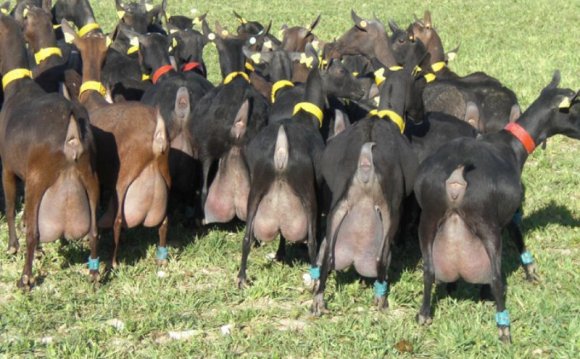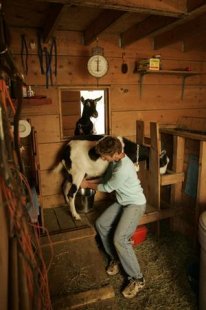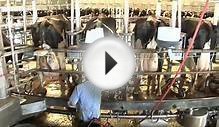
 The goat is a friendly animal and easy to keep. With proper attention, goats are generally healthy and affordable.
The goat is a friendly animal and easy to keep. With proper attention, goats are generally healthy and affordable.
One or two goats can furnish fresh milk for a family on a year-round basis. Surplus milk can be used for butter or cheese or to raise other young animals. Goat's milk is sometimes recommended for infants or elderly persons since it is easily digestible.
If you plan to keep a dairy goat for family milk, you should be certain the animal is tested and is free of disease. A local veterinarian can help you with this.
Some communities have zoning laws or ordinances that prohibit goats or other animals in urban areas. Check the regulations for your area.
Goat breeds
There are five main breeds of dairy goats. They are Toggenburg (pictured here), Saanen, Nubian, Alpine, and American La Mancha.
Certain characteristics are stronger in some breeds than others. Toggenburgs are recognized for long lactations, with fat content of milk averaging 3.8 percent. Saanens are larger goats and are recognized for being heavy milkers, with 3.5 percent fat average. The smaller Nubians are noted for higher milk fat than the other breeds. Alpines are recognized as a hardy breed and milk well, producing about 3.5 percent fat milk. A characteristic of the La Mancha breed is no visible external ears. They are large animals and good milkers, with milk at about 4 percent fat. Angora and pygmy goats are not good milk animals.
Consider getting a breed for which you can obtain buck service from a breeder in your community. Check with your county Extension office or local farm publications for breeders in your area.
Buying a goat
Since most people want only to supply family milk, good grade or non-registered goats will serve this purpose. For a variety of reasons you may prefer to buy registered, pedigreed animals, but the cost will be higher. If your goal is milk, your chief concern will be the milking ability of the goat. Total milk production depends on amount of milk daily and how long the doe will produce before going dry.
According to the Oregon State University Extension Service, a good milker will produce an average of 2 1/2 to 3 quarts daily, over a period of 9 to 10 months. Such goats may produce up to 1 1/2 gallons daily during the peak period of lactation and between 1 and 2 quarts later in the lactation. Two goats, bred to freshen 3 to 4 months apart, should assure some milk every day of the year.
YOU MIGHT ALSO LIKE











